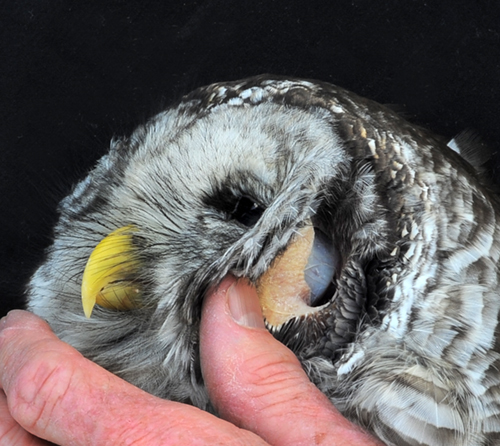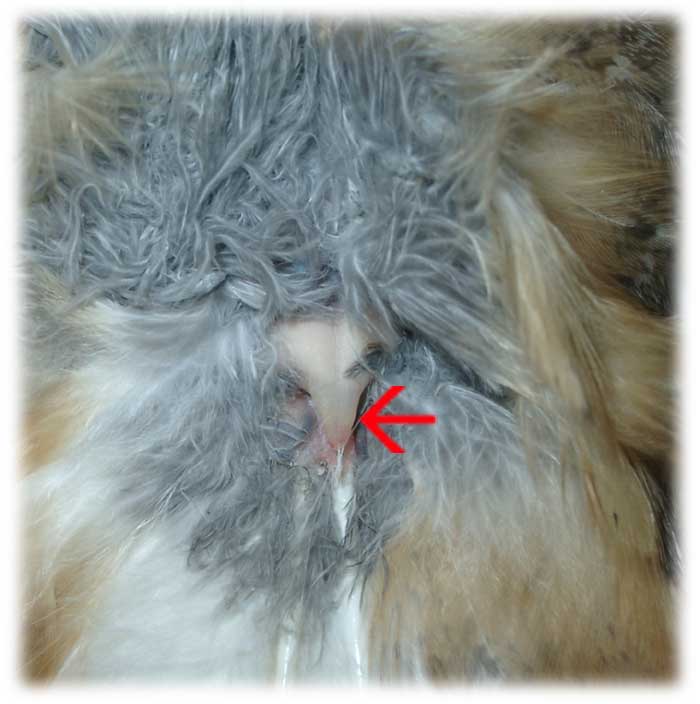When I was in ornithology, I found out some things about birds that really blew my socks off. Not because these facts were so amazing per se, but because they were so obvious and I had never taken the time to notice them. So let me pass on this wisdom to you.
First off, owls have ears. Like real flaps of tissue. I found this out during a lab where we had to skin and stuff a bird for the collections. I managed to partner with a guy whom I had had a big-time crush on, partly for that reason, and partly so he would scoop out the brains so I didn’t have to. We got a Barred Owl, and when we got to the head, he showed me these crazy owl ears of which I speak.
I mean, I knew owls had ear holes with which they could hear. But I didn’t realize that they had ear structures under their feathers. Am I the only one who is surprised by this fact? What’s more is this little tidbit: many owls’ ears are located asymmetrically. One ear is closer to its face, while the other is set farther back on the head. This creates a sort of stereo surround sound effect; the owl can audio-locate the origin of sounds with more accuracy within its full 360˚ environment. From this, you can infer that an owl’s ability to turn its head almost completely around is no coincidence. These animals are sensory processors specially adapted to monitor their environments in 360˚.
 |
| startribune.com |
Another hidden structure that all birds have is called the uropygial gland. If you’ve ever watched a bird, you notice it exhibits extensive grooming behaviors. They turn their heads around and seem to straighten their feathers with their beaks in quick motions. What they are really doing is reaching around to their oil-secreting uropygial gland (located under the feathers in the butt area) and spreading oil all over their feathers to keep them waterproof. Who knew?
 |
| themodernapprentice.com |
If you are a bird, the importance of keeping your feathers waterproof cannot be stressed enough. Without a solid, water-impermeable layer of feathers, a bird is as good as dead. I think it’s kind of crazy that avian evolution did not produce a physiological system that passively kept the feathers oiled. Instead, an active behavior evolved. You know that humans have oil glands all over our bodies to keep our skin from drying out. Can you imagine that instead, you have a little flap of tissue on your lower back and every 10 to 15 minutes, you have to reach behind and spread some oil to your dry skin patches. It’s weird.
Also, another crazy avian anatomical tidbit: skeletor legs. And yes, that is their official scientific name. Bird legs are synonymous with “skinny legs” (I would know- when I was in junior high an older, cute guy told me that I had bird legs and I never frickin forgot it). Have you ever stopped to think how it is that their legs are so skinny? They look meat-less, right? That’s because they are. They have no muscles! Yet they are fully functional, moveable limbs. So how does a muscleless limb move? Via a rope and pulley system, baby.
 |
| studio.nathanielguy.com |
Their feet are sort of like marionette dolls- an extensive system of tendons connect their toes to the muscles at the top of the leg. If you cut a bird leg open right where the meaty part ends and the skeletor part begins, you can find the little tendons. Pluck one, and one toe moves. Pluck another, and another toe moves. It’s so cool.
Holla for interesting and unexpected bird morphology!

Claire! That's so interesting. I used to have a cockatiel and he would always reach directly at the back of his neck before he proceeded to clean himself and now I know why! Thanks for sharing!
ReplyDeleteor I should say I thought he was cleaning himself but now I know he was "oiling up"
DeleteKerry-
ReplyDeleteHe indeed was "oiling up!" Birds are so weird. Weirder than people think...